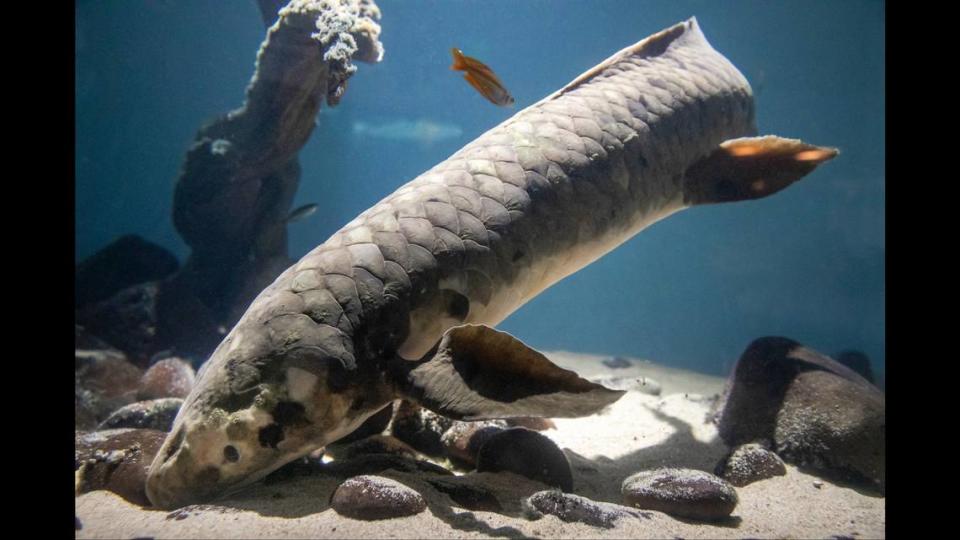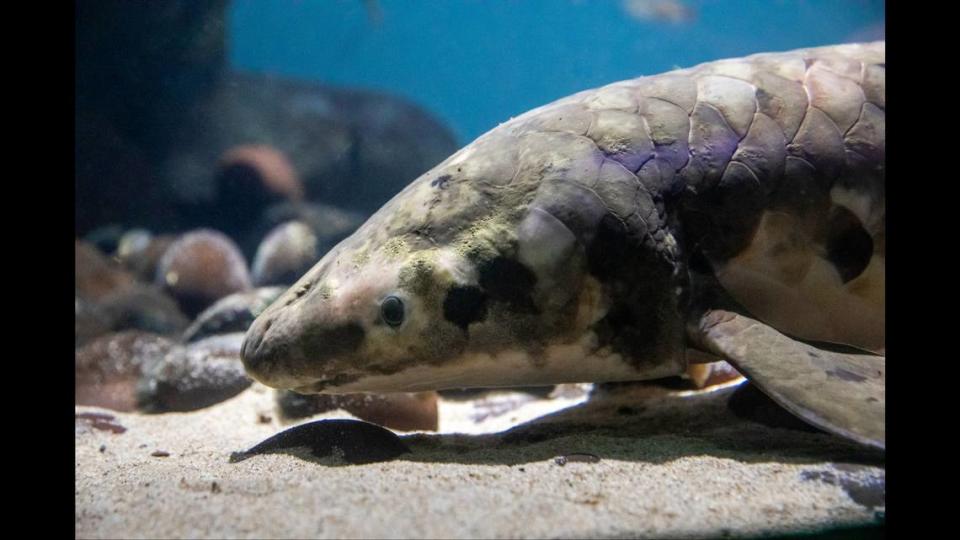She’s been at CA aquarium since before WWII. Now she’s world’s oldest aquarium fish
About a year before the onset of World War II, an Australian lungfish was brought to a California aquarium — a place she has called home for nearly 85 years.
Now, through “cutting-edge DNA analysis,” researchers have estimated the Steinhart Aquarium fish, named Methuselah, to be 92 years old, plus or minus 9 years, the California Academy of Sciences said in a Sept. 18 news release.

Her new age estimate, 8 years higher than her previous estimated age, makes her “the oldest living fish in an aquarium anywhere in the world,” according to the San Francisco museum.
“Although we know Methuselah came to us in the late 1930s, there was no method for determining her age at that time, so it’s incredibly exciting to get science-based information on her actual age,” Charles Delbeek, a curator of projects at the aquarium, said in the release.

New ‘DNA age clock’
Researchers — led by Ben Mayne, who works with the Commonwealth Scientific and Industrial Research Organisation, and David T. Robert of Seqwater — wanted to create “a catalog of living lungfish,” the museum said. To accomplish this, they studied Methuselah as well as dozens of lungfish from six other institutions in the U.S. and Australia.
Previously, methods to estimate the age of older fish proved to be “notoriously difficult and technically challenging,” as well as sometimes lethal for the fish in question, the museum said.
The team’s new method, which is expected to be published in a study later this year, uses a “tiny tissue sample from a fin clip,” a “harmless methodology,” according to the museum.
“For the first time since the Australian lungfish’s discovery in 1870, the DNA age clock we developed offers the ability to predict the maximum age of the species,” Mayne said in the release.
Knowing this “maximum age” can tell researchers “how long a species can survive and reproduce in the wild,” Mayne said.
This, in turn, can be used to model the species’ “viability and reproductive potential,” according to Mayne.

In Methuselah’s case, her age was a bit “challenging to calculate,” Roberts said in the release.
“Her age is beyond the currently calibrated clock,” Roberts said. “This means her actual age could conceivably be over 100, placing her in the rare club of fish centenarians.”
An ancient fish like Methuselah help researchers “understand maximum longevity of a species under ideal care conditions,” Mayne said.
An ambassador for her species
Since her November 1938 arrival on a Navigation Company liner, the museum said Methuselah “has far outlived the 231 other fishes from Fiji and Australia that arrived with her.”
She has become an aquarium staple, as well as “an important ambassador for her species, helping to educate and stoke curiosity in visitors from all over the world,” according to Delbeek.

“But her impact goes beyond delighting guests at the aquarium: Making our living collection available to researchers across the world helps further our understanding of biodiversity and what species need to survive and thrive,” Delbeek said.
Lungfish, a species native to “a handful of sluggish river systems in Queensland, Australia,” have been largely unchanged for millions of years, according to the museum. This ancient history has led some to call Methuselah a “living fossil” who offers “a fascinating glimpse into the prehistoric past.”
More than her advanced age, though, the museum said she has garnered fame “for her charming personality and penchant for belly rubs.”
Woman spots small creature — considered locally extinct for 100 years — in her garden
Fossils of 73-million-year-old tiny ‘ice mouse’ unearthed in Alaska. ‘A fitting title’
Fisherman pulls in nets covered with ‘fairy floss’ – and discovers a new species

